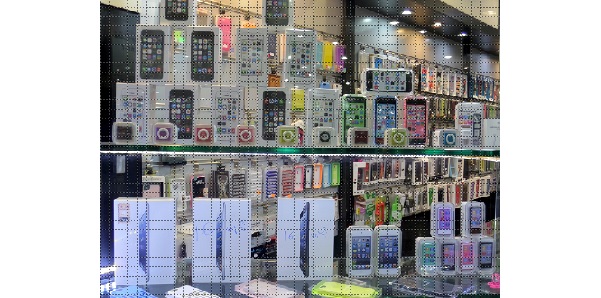On February 7, the U.S. Treasury issued a general license allowing Iranians to purchase computers, cell phones, software, mobile applications and Internet services. “We are committed to promoting the free exchange of information in Iran and to enabling individuals in Iran to communicate with each other and with the outside world,” said a Treasury spokeswoman in an email, according to The Wall Street Journal. “We’ll continue to support our commitment to promoting freedom of information while continuing to aggressively enforce our Iran sanctions.”

The Paytakht Shopping Center in Tehran specializes in electronics.
The amended license expanded allowances from May 2013 that that allowed Americans to export communications technology “persons in Iran.” But now foreigners and Americans can export “to Iran” more broadly.
The following Treasury release explains the change in licenses.
337. What are key changes made by amended General License D-1?
First, GL D-1 expands the authorization in GL D to permit the exportation, reexportation, or provision, directly or indirectly, to Iran of certain personal communications software, hardware, and related services subject to the Export Administration Regulations, 15 C.F.R. parts 730 through 774 (“EAR”) (rather than just the exportation or reexportation from the United States or by a U.S. person of such software, hardware, and services). See GL D-1, paragraphs (a)(2)(i) & (a)(3). For purposes of GL D-1, the term “provision” could include, for example, an in-country transfer of covered software or hardware. The general license now authorizes, for example, a non-U.S. person located outside the United States to export certain hardware and software subject to the EAR to Iran. See FAQ #341.
Second, GL D-1 adds new authorizations for the exportation, reexportation, or provision, directly or indirectly, by a U.S. person located outside the United States to Iran of certain software and hardware not subject to the EAR. See GL D-1, paragraphs (a)(2)(ii) & (a)(3). The general license now authorizes, for example, a U.S. company to export to Iran, from a location outside the United States, certain hardware or software that is not subject to the EAR (including foreign-origin hardware or software containing less than a de minimis amount of U.S. controlled content). See FAQ #342.
Third, a new Note has been added to paragraphs (a)(2) and (a)(3) clarifying that the authorization in those paragraphs includes the exportation, reexportation, or provision, directly or indirectly, of the authorized items by an individual leaving the United States for Iran. GL D-1 also adds a new authorization for the importation by an individual into the United States of certain hardware and software previously exported by the individual to Iran pursuant to other provisions of GL D-1 or 31 C.F.R. § 560.540. See GL D-1, paragraph (a)(5). The general license now authorizes, for example, an individual to carry a smartphone that falls within the scope of the GL D-1 authorization while traveling to and from Iran. See FAQ #343.
Finally, to further ensure that the sanctions on Iran do not have an unintended chilling effect on the willingness of companies to make available certain publicly available, no cost personal communications tools to persons in that country, GL D-1 adds a new authorization related to the potential recipients of certain publicly available, no cost services and software. See GL D-1, paragraph (a)(6).
Notwithstanding these changes, nothing in this general license relieves an exporter from compliance with the export license requirements of another Federal agency. [02-07-2014]
Click here for the full license.
Photo credit: Robin Wright
